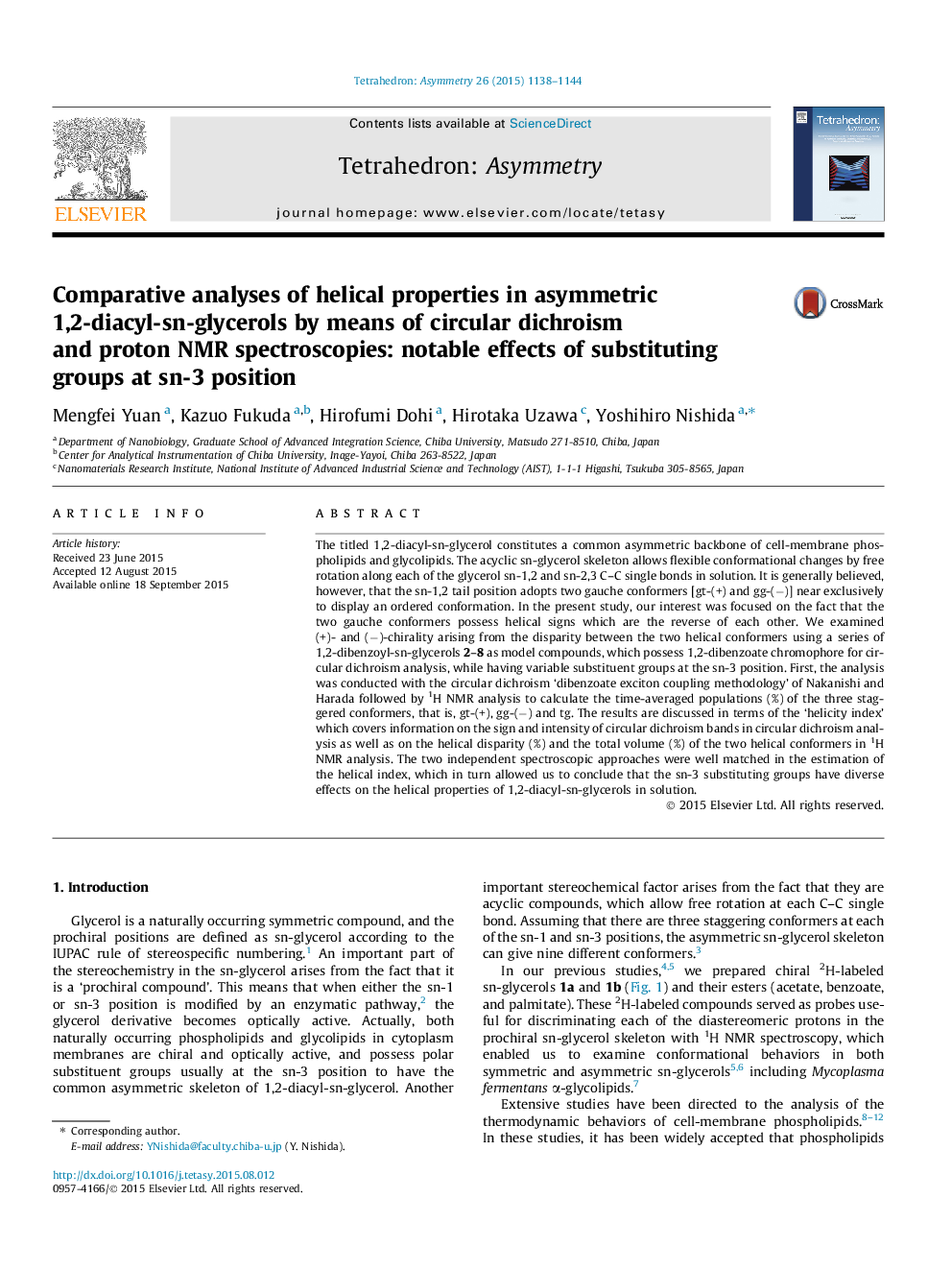| Article ID | Journal | Published Year | Pages | File Type |
|---|---|---|---|---|
| 1343562 | Tetrahedron: Asymmetry | 2015 | 7 Pages |
The titled 1,2-diacyl-sn-glycerol constitutes a common asymmetric backbone of cell-membrane phospholipids and glycolipids. The acyclic sn-glycerol skeleton allows flexible conformational changes by free rotation along each of the glycerol sn-1,2 and sn-2,3 C–C single bonds in solution. It is generally believed, however, that the sn-1,2 tail position adopts two gauche conformers [gt-(+) and gg-(−)] near exclusively to display an ordered conformation. In the present study, our interest was focused on the fact that the two gauche conformers possess helical signs which are the reverse of each other. We examined (+)- and (−)-chirality arising from the disparity between the two helical conformers using a series of 1,2-dibenzoyl-sn-glycerols 2–8 as model compounds, which possess 1,2-dibenzoate chromophore for circular dichroism analysis, while having variable substituent groups at the sn-3 position. First, the analysis was conducted with the circular dichroism ‘dibenzoate exciton coupling methodology’ of Nakanishi and Harada followed by 1H NMR analysis to calculate the time-averaged populations (%) of the three staggered conformers, that is, gt-(+), gg-(−) and tg. The results are discussed in terms of the ‘helicity index’ which covers information on the sign and intensity of circular dichroism bands in circular dichroism analysis as well as on the helical disparity (%) and the total volume (%) of the two helical conformers in 1H NMR analysis. The two independent spectroscopic approaches were well matched in the estimation of the helical index, which in turn allowed us to conclude that the sn-3 substituting groups have diverse effects on the helical properties of 1,2-diacyl-sn-glycerols in solution.
Graphical abstractFigure optionsDownload full-size imageDownload as PowerPoint slide
